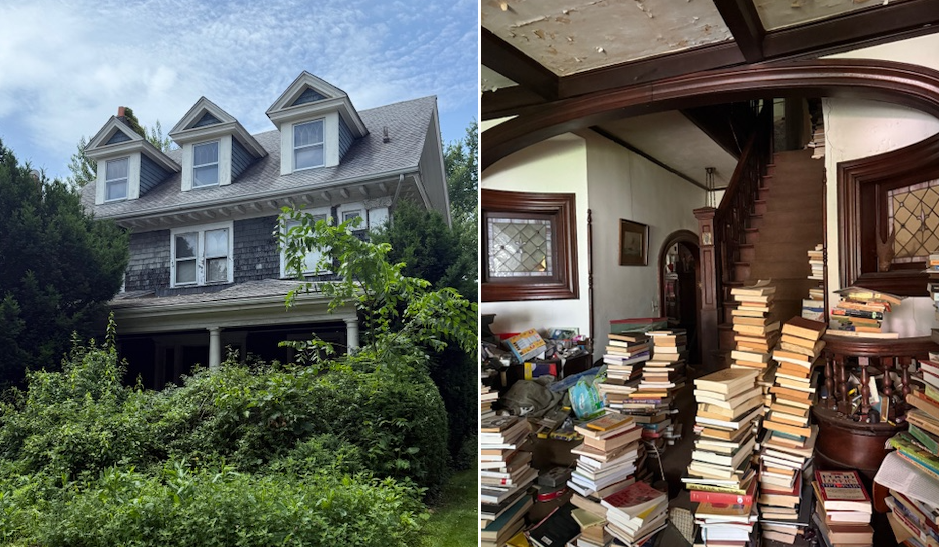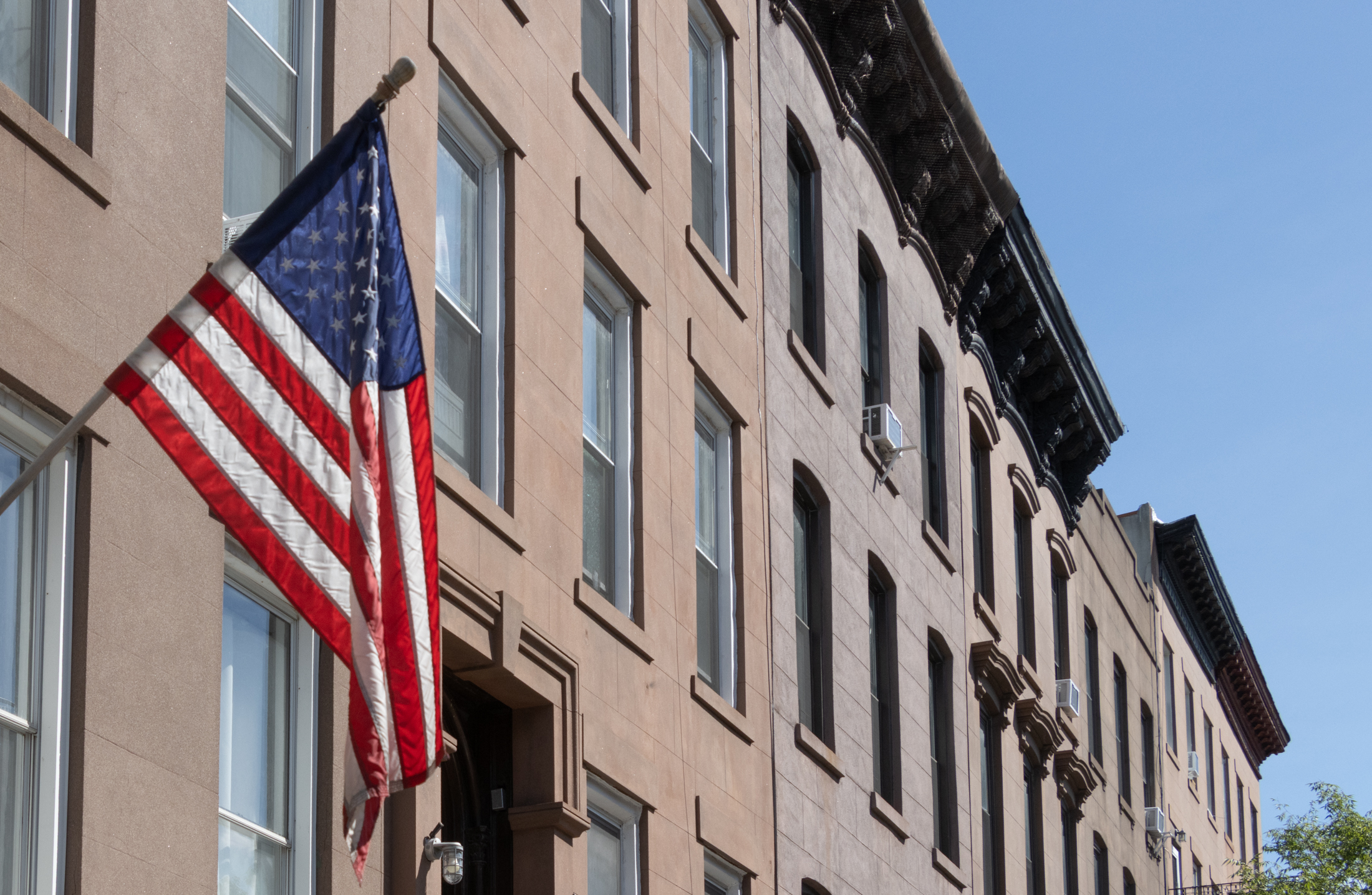Facade Easements: Worth the Risk of Audit?
As we mentioned in yesterday’s Events post, Tim Gunn from the Trust for Architectural Easements gave a lecture last night about the tax write-off available to owners of historic buildings that donate a facade easement. Historically, people have been able to write off 10 to 15 percent of the value of their homes, not an…

 As we mentioned in yesterday’s Events post, Tim Gunn from the Trust for Architectural Easements gave a lecture last night about the tax write-off available to owners of historic buildings that donate a facade easement. Historically, people have been able to write off 10 to 15 percent of the value of their homes, not an insignificant amount in this day and age. The only problem is that, despite the existence of case law in support of the easement, the IRS has decided that it doesn’t think that owners of houses that are already restricted by existing landmark laws should be able to take the write-off. As a result, 40 or so homeowners in Brooklyn that participated in the easement program in 2003 and 2004 have gotten hit with an audit in the last couple of years, according to one of the affected homeowners. We’d be interested to hear from any readers who attended last night’s program what Mr. Gunn’s spin on the audit threat was and whether he provided any compelling evidence that it’s still worth the risk for those in existing landmark districts.
As we mentioned in yesterday’s Events post, Tim Gunn from the Trust for Architectural Easements gave a lecture last night about the tax write-off available to owners of historic buildings that donate a facade easement. Historically, people have been able to write off 10 to 15 percent of the value of their homes, not an insignificant amount in this day and age. The only problem is that, despite the existence of case law in support of the easement, the IRS has decided that it doesn’t think that owners of houses that are already restricted by existing landmark laws should be able to take the write-off. As a result, 40 or so homeowners in Brooklyn that participated in the easement program in 2003 and 2004 have gotten hit with an audit in the last couple of years, according to one of the affected homeowners. We’d be interested to hear from any readers who attended last night’s program what Mr. Gunn’s spin on the audit threat was and whether he provided any compelling evidence that it’s still worth the risk for those in existing landmark districts. Sounds to us like people in areas that may be landmarked in the next couple of years should be all over this while those whose props are already landmarked would do better to sit tight.
Thursday Events [Brownstoner]





My audit is also underway. Is anyone using a tax lawyer that is familiar with these issues?
I am aware that in Mass., a certified appraisal professional has researched and assembled an impressive report detailing the comparisons between sales prices of comparable homes with and without easements. The report concludes an 8-11% diminution in value. It may make sense for the audited to band together to to commission such a study in Brooklyn. TAE might help support this, as it provided me with the Mass. report.
The comments above about the central issue being the absence of any diminution in value because of the landmarks ordinances already in place seem overly theoretical to me. Consider this practiclity:
two identical neighboring houses on the market for the same price. One has an easement one does not. The well-qualified buyer has the choice. Naturally, he will choose the one without–why have the added hassle everytime work needs to be done, the uncertainty, the risk to his own resale value, the weird encumbrance on your title, etc.? Besides, the benefit to you is if your NEIGHBORS are restricted–your house, you control. As the reasonably motivated seller with the easement, I would not hesitate to approach this well-qualified buyer with a reasonable discount to get his attention away from the house with no easement.
Does anyone think this scenario misses the point? Isn’t this precisely what diminution in value is? Isn’t the only question how much? If anyone wants to discuss this off-line 718 768 8430
Wish me luck. . . my audit with the IRS started this week. Face to face meeting with a clueless and cynical auditor (unfortunately for me, I am his first conservation easement case). He kept saying “tax shelter”. I corrected him several times – those are your words. A conservation easement it is a charitable donation and we didn’t enter into this lightly. I have to provide a mound of paperwork. It was never explained by what was then the National Architectural Trust that there could be problems for a house such as mine that was in the National Registry, but also in a city landmarked neighborhood (Park Slope). In fact, it was even seen as a plus that the home was already landmarked, making an approval that much less of a hurdle to overcome for to label the house historically important.
We were asked a lot of questions like: what do you think your home has contributed to the public benefit? We answered our home is sought after for house tours annually, and that we have significant pride of ownership and are constantly approached for various events to take place at our home. We have had location scouts seek out the unique features of our home.
We were also asked how could we prove that the Trust is actually monitoring our home annually? We answered that this wasn’t proof that we needed to provide.
I am truly sickened by all of this, and hope it goes away soon and we get to keep our deduction as we have contributed a lot of cash and our facade to the Trust. Somehow I think this is wishful thinking on my part!
When I spoke to the Trust about all of this this week, they indicated that a lot of cases are on going in our area and in MA. The IRS tactic seems to be going after individuals to disuade them from participating at all, but making an example out of those of us that played by the rules, to the T. I’m keeping annonymous in this blog, as am currently under investigation, and don’t want to bias my clueless auditor further.
Any comforting words of advice would be very welcome!
I’m not sure why I’m extending the torture, except the hope that being very clear will reach someone. I did this!! Got a $220K deduction!! Was audited by the IRS – there were no visits to the IRS with accountant and lawyer in hand. I had to make a lot of xerox copies and my accountant wrote a cover letter. That’s it. The deduction was allowed. I’ve lived in Brooklyn my whole life (53yrs). Who cares if TAE makes money managing these easements. I can think of a lot of worse things people do for money. I’ve put a great deal of resources into my 1840 browstone and have no problem with the US govt. helping to support historic preservation rather than a shopping mall. Some of the comments on this trail were really out to lunch. Jeb
Chip,
In your profile, you state that your house is in Williamsburg. Would that be in the Willoughby-Suydam [National Register]Historic District? In any case, AFAIK, there’s no CITY HD in Williamsburg, so most of the concerns raised in this thread would not, luckily for you, apply to your situation.
HISTORIC PRESERVATION AND ITS ISSUES
• Historic preservation: A major success story at all levels of government
o Contributes to a shared sense of history, attractive and stable neighborhoods, and economic development and urban revitalization
• Preservation is national policy, but most regulation happens at the local level
o Overseen by hundreds of landmarks commissions and historic district commissions
• Common misconception: All local landmarks commissions have equal, and total, control over the fate of local landmarks – in fact, they don’t
o Commissions’ financial and staff resources vary from modest to none
o Commissions’ legal authority varies from reasonably strong to non-existent
o Many localities still don’t have preservation ordinances of any kind
• Weak commissions: Advisory only
o Can only delay demolition (sometimes for as little as 45 days), not prohibit it
• Weak commissions: No commission decision final
o All decisions subject to review (planning commission, city council) and often overturned
• Even strong commissions can’t provide complete protection
o Some commissions permit inappropriate alterations and demolitions
o Some commissions lack enforcement resources
o Some commissions have two tracks, offering strong protection to some buildings and weaker protection to others
o Many commissions have hardship provisions
o Many commissions are threatened by changes to their laws
o Most commissions, with limited resources, can’t protect all eligible landmarks
o All commission are only as effective as their political support allows
• The price of preservation: The private cost of a public benefit
o Owners of historic properties bear the cost of preservation – lost development opportunities, extra costs of caring for historic property
o Some states and cities offer financial relief, but programs are spotty and inconsistent
o Sentiment against imposing private costs for land-use regulation is growing nationwide (e.g. Oregon’s Ballot Measure 37 in 2004)
o Preservation easements offer the only nationally available source of financial support for owners of historic properties
PART II: THE ROLE OF PRESERVATION EASEMENTS
• Preservation easements
o Created in 1976, part of a major national preservation initiative
o In exchange for a one-time federal tax deduction, owners voluntarily give up – in perpetuity – the right to demolish or make inappropriate alterations to their historic properties
• Easements help in two ways
o Help owners pay the private cost of the public benefit of preservation
o Provide additional protection, no matter how strong the local landmarks commission
• Easements avoid major preservation pitfalls
o Being national in scope, easements operate independently of local politics
o Being voluntary, easements eliminate the issue of owner opposition
o Being financially attractive, easements eliminate a major impediment to owner acceptance of preservation
• Many landmarks are protected by easements but not by local commissions
o Easements require properties to be listed in the National Register of Historic Places, a program administered by the states
o Local commissions designate landmarks according to their own schedules and priorities, but the State Historic Preservation Offices will consider any meritorious nomination
o Thanks to the financial incentive, many owners of locally unprotected landmarks have supported National Register listing and donated easements
• Easements are consistently available nationwide
o The only nationally available tool for protecting historic properties
o The only nationally consistent tool for helping owners bear preservation costs
• Value of easements long recognized by dozens of preservation organizations
o Accepted by national, state-wide and city-wide non-profits, and some local governments
• Easements are in tune with current trends in land-use regulation
o Easements eliminate issue of government compensation for lost value due to land-use regulations
• Easements are a bargain
o Easements currently number no more than 4000
o The cost of an easement, in foregone tax revenues, is paid just once, but the easement continues in perpetuity – over time, the cost amortizes to very little
o The cost of monitoring and regulating is borne not by the public, but by the non-profit easement-holding organizations – financed by property-owner donations
I made an easement donation to the TEA and they were a pleasure to work with.
First of all TEA is not just about “easements onlyâ€. In New York they have provided grants and resources for a number of community support projects to further their cause – which is historic architectural preservation.
Here is just a few of the projects that I know of:
* Horatio Street Cobblestone Restoration,
* Bond Street Cobblestone Restoration,
* Removal & Replacement of Modern Cobra Head Lamps with Historic Bishops Crook Lamps in Greenwich Village.
* Canal Park Beautification,
* Bogardus Park Beautification,
* NYC Parks Department Monument and Statue Restoration,
* Downtown Alliance “Third Thursday Lecture Seriesâ€,
*Paid for the Printing Costs of HDC Book: CREATING AN HISTORIC DISTRICT: A GUIDE FOR NEIGHBORHOODS,
* Gave a grant to support a HDC Preservation Lecture Series,
* Friends Seminar School Architectural Curriculum,
* Friends of The Highline Architectural Curriculum,
* Open House New York Architectural Curriculum,
* Museum of Modern Art Architectural Curriculum,
* Art Deco Society of New York grant
Clearly TEA is an active and genuine group of preservationists that remain involved in many other preservation initiatives that have nothing to do with easements.
To suggest that the TEA encourages inflated easement appraisals is silly.
First of all; a third party qualified appraiser is hired by the donor to determine the value of the easement. Thereafter, the appraisal is doubled checked by a fourth party qualified appraiser to make sure the easement is in compliance with the IRS regulations. Do you think any appraiser is going to risk losing his license by over inflating an appraisal for any one donor?
The cash donation is used to fund the monitoring and enforcement of the easement for the rest of time. It is an endowment. The IRS requires that the easement holding organization have the resources to monitor and enforce the easement. The amount of the cash donation is not tied to the easements value. The amount requested is based on the physical size of the property, and the liability associated with monitoring and enforcing the easement forever. Further more, TEA was flexible with me and we came to a mutually acceptable figure. The whole process was voluntary and enjoyable.
I am really shocked at all the misinformation and dumping going on in this the forum by a couple of misinformed people.
I was at an earlier TAE presentation in Manhattan. They said that there were IRS guidelines on appriasals in the works. It sounded like waiting for those guidelines will reduce the audit risk. The TAE guys did seems like snake oil salesmen or something out of Glenbarry Glenross, much more interested in collecting their fee than anything else. But they were up front about the IRS not liking the program (and the risks that creates).
I though you knew ALL there was to know about this subject. I presume you’re aware that TAE requires a sizable CASH donation. Why be so disingenuous? Or are YOU the one pretending to be an authority?
From the Q & A section of the TAE website [which has finally started working]:
“Is there a cash outlay associated with making an easement donation?
Yes. The cash outlay includes an appraisal fee, possible bank service charges for subordination and a cash contribution to the Trust to serve as funding for monitoring the property in perpetuity”.
From the section of their website about the application process:
“You will be asked to provide a $1,000.00 refundable deposit that may be paid by check or credit card….
You will NEED TO [emphasis added] … write a check to the Trust as a charitable contribution, less your deposit….”
And, from an earlier poster on this thread, who you did NOT see fit to challange:
“Keep in mind too that the Trust for Architectural Easements, while a non-profit, exists solely to take these easements and makes their money off a per centage of the value of the easement, and whoever you are dealing with there probably gets paid a commission off that.”
Percentage of donation? The easement donation is a non cash donation. There is no commission. Sorry – wrong again again and again.